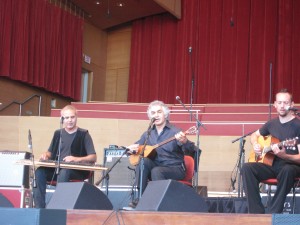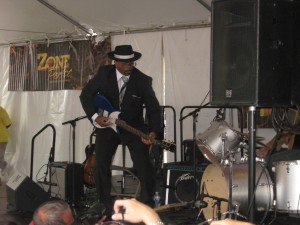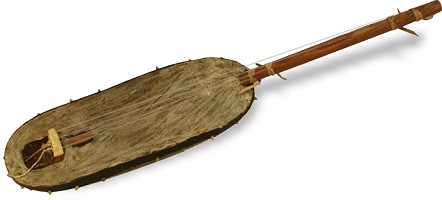Friday, June 25, 2010 is the second anniversary of my first electric guitar lesson with Jim Goelitz at Kagan and Gaines in Forest Park, IL.
When I began taking lessons, I had no idea what I was getting in to. In retrospect, I was very naive and seriously underestimated the length of the learning curve. In spite of the years I’d spent listening to blues, I didn’t realize how challenging it was to play blues. It’s not just a matter of learning a few chords. The most common 12-bar blues form is based on “only” three chords, which might sound simple, but then there are such matters as string bends, vibrato, hammer-ons, pull-offs, slides, riffs, rhythm and all the other things that contribute to the tone and sound of the blues. Putting all that together in an improvised solo is an even bigger challenge.
On the one hand, I thought initially that I would be “farther along” (whatever that means) than I am. On the other hand, I can clearly see that I have learned a lot and can now do things easily that were difficult or impossible before. One of the things that has kept me going is that I can tell that the more I play (practice, practice, practice), the better I get. Practice really does work. At the same time, I’m constantly reminded of how much I still need and want to learn.
Sometime in January, I started working on songs in Kenny Sultan’s book, Introduction to Acoustic Blues (2001). In spite of the word “introduction,” it’s not a book for beginners. I’m glad I didn’t attempt it any earlier, though I did learn the “Blues Shuffle in E,” “Single String Shuffle” (in E) and “Shuffle in A” in the early months of my lessons.
Since the first of this year, I’ve been practicing the first seven songs and still don’t feel like I’ve mastered them. I’ve definitely improved and can at times get through some of them without stumbling, but they all need more practice. There are a couple of songs (“Unknown Blues” and “The N-B Blues”) that have a few gnarly, knuckle-busting measures that may take months more to play reliably. However, I enjoy what I can play so far and look forward to improving.
One of the satisfactions of learning this country blues style of music is that the songs are intended as solo music (one plays both bass and melody), so they sound appealing without other musicians. I also want to learn what it takes to play with others, but practicing a bass line from a song isn’t as satisfying on its own.
At the moment my primary focus is learning these fingerstyle blues, but I’m also working on a parallel track of preparing for–someday–playing with other musicians. I continue to fantasize about performing both solo and as part of a group. On the fingerstyle solo track, my model is early John Lee Hooker. On the blues band track, my models are Albert Collins, Howlin’ Wolf and Magic Slim and the Teardrops. I can’t imagine playing at their level, but that’s what I’m aiming for.



